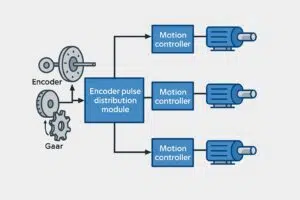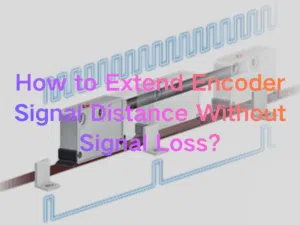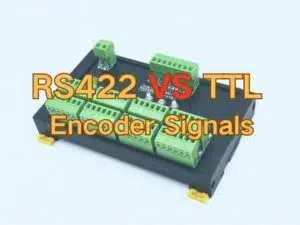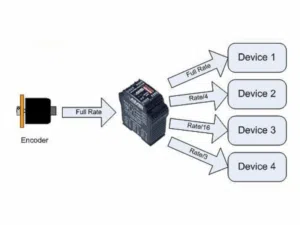In modern electrical installations, reliable and efficient connections are essential for both performance and safety. Among the most popular options are push-in and spring cage connectors. This article focuses on push-in VS spring-cage connector, comparing their main features.
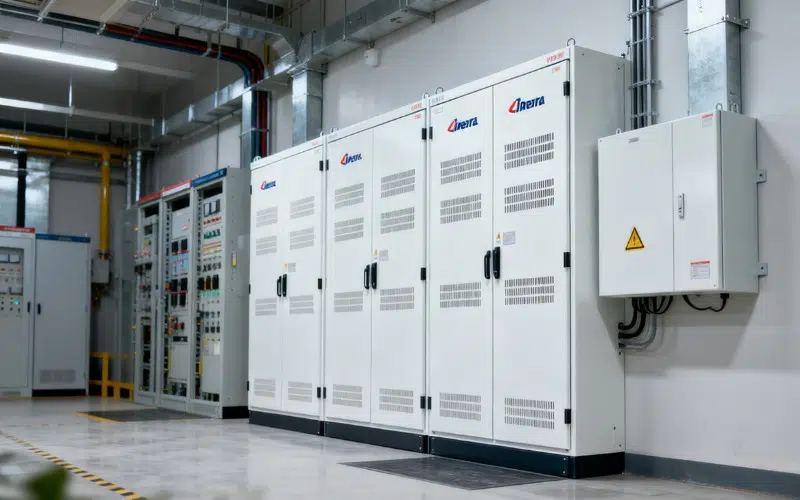
While push-in connectors offer fast and tool-free installation for rigid wires, spring cage connectors provide robust and vibration-resistant performance. Understanding the differences between these two types is crucial for engineers. By exploring their features, readers can make informed decisions for optimal wiring solutions.
Push-in VS Spring-Cage Connector Key Takeaways
- Push-in connectors secure wires quickly with a tool-free insertion, while spring-cage connectors use a spring mechanism to hold conductors firmly and resist vibration.
- Choosing the right connector depends on your application: push-in terminals excel in fast, repetitive installations, whereas spring-cage terminals are ideal for heavy-duty or vibration-prone environments.
- Push-in connectors save installation time and are simpler to wire, while spring-cage connectors require an extra step to engage the spring but ensure consistent, reliable clamping.
- Maintenance differs: push-in terminals may need periodic inspection for loose wires, whereas spring-cage connectors provide long-term, low-maintenance reliability.
- AOSI’s push-in and spring-cage connectors offer high-quality, durable solutions that fit various wiring needs, from fast assembly to industrial-grade performance.
Part 1 What is a Push-in Connector?
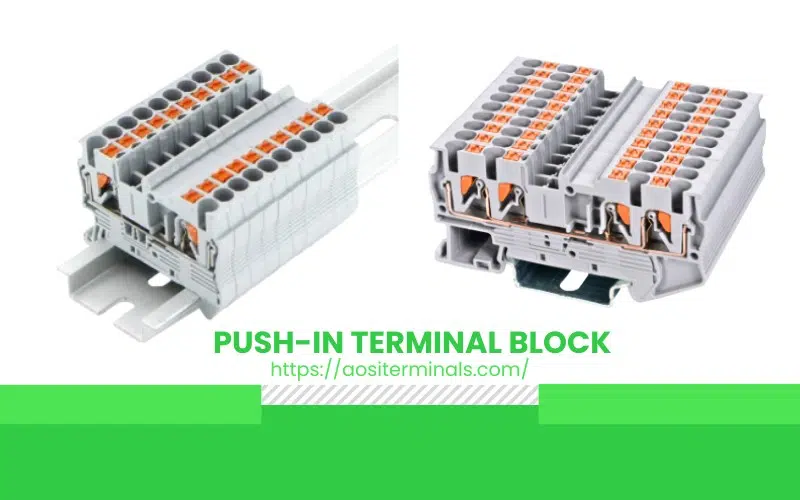
Definition and Principle
Push-in connectors are designed for fast, tool-free wiring of both rigid and flexible conductors, with or without ferrules. The connector uses a pre-tensioned contact spring inside the clamping chamber. When a conductor is inserted fully, it pushes down the spring’s locking mechanism, releasing the internal slider and allowing the contact spring to snap automatically, clamping the wire securely.
This mechanism ensures reliable electrical contact with minimal insertion effort. To release the conductor, a push button disengages the spring, similar to traditional Push-in technology. The compact insulating housing accommodates space-constrained installations while providing a clean and organized wiring solution.
Highlights of the Design:
- Fast, tool-free wire insertion using an internal spring mechanism.
- Metal contact element secures the wire without screws.
- Compact insulating housing suitable for tight spaces.
- Maintains reliable electrical contact.
- Designed for both solid and stranded conductors (depending on type).
Advantages of Push-in Connector
Push-in connectors provide a fast and reliable alternative to traditional wire nuts and screw terminals. Key benefits include:
- Time-saving: Installation can be up to 50% faster compared to screw terminals.
- Reduced downtime: Devices with push-in connections can be replaced quickly, minimizing operational interruptions.
- Enhanced safety: Secure connections reduce the risk of loose wires and electrical faults.
- Versatility: Suitable for residential, commercial, and industrial installations.
Common Applications
Push-in connectors are widely used in scenarios where efficient and dependable electrical connections are required.
Key Applications:
- Control panels and electrical distribution boxes.
- Building wiring for residential and commercial projects.
- Industrial automation and machinery wiring.
- DIY home repairs and small electrical projects.
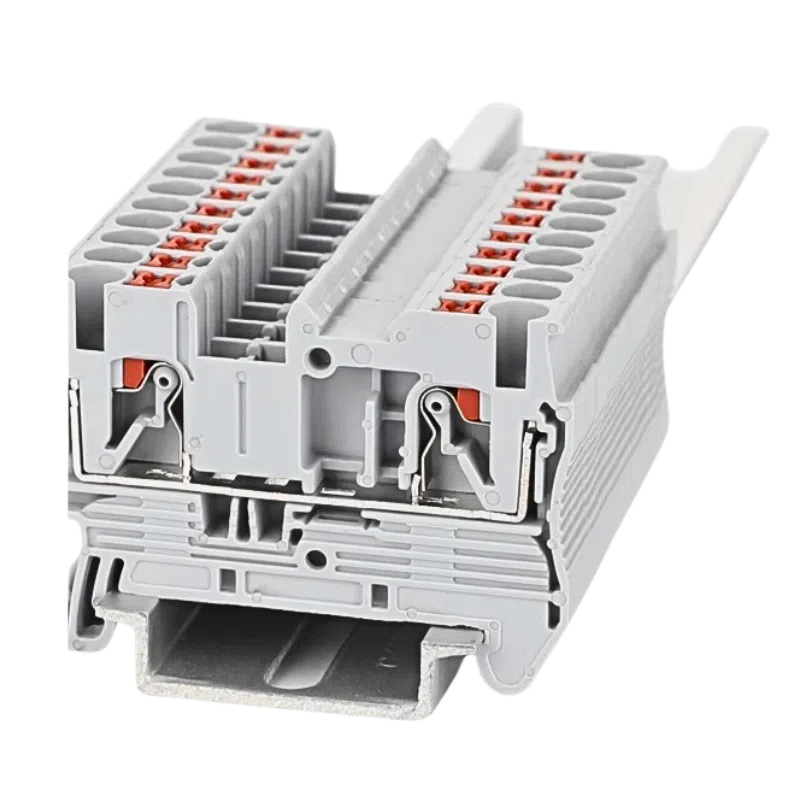
Recommended Product – Explore More from AOSI
Discover AOSI’s solutions designed for industrial automation, control panels, and power systems. Reliable performance, certified quality, and customizable options — all directly from the source factory.
View More DetailsPart 2 What is a Spring-Cage Connector?
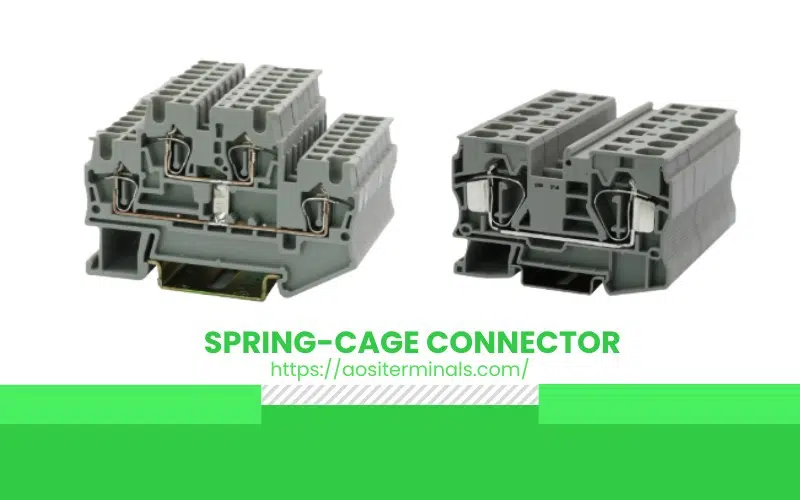
Definition and Principle
A spring-cage connector is a modern wiring solution that secures conductors without screws. Instead of manually tightening, a stainless steel spring inside the connector applies uniform pressure, holding the wire firmly.
This design ensures a stable, vibration-resistant connection while reducing the risk of loose contacts. Conductors can be easily inserted and removed with minimal effort, making installation both safe and efficient.
Highlights of the Design:
- Screw-free design using a stainless steel spring.
- Provides consistent, vibration-resistant pressure on conductors.
- Easy insertion and removal of wires.
- Ensures reliable electrical contact over time.
Advantages of Spring-Cage Connector
Spring-cage connectors offer several benefits compared to traditional screw terminals.
Key Advantages:
- Vibration-resistant: Maintains secure connections in industrial and mobile applications.
- Low maintenance: No periodic retightening required.
- Time-saving: Faster wiring compared to screw terminals.
- Reliable contact: Consistent pressure ensures long-term electrical stability.
Common Applications
Spring-cage connectors are widely adopted in settings where stable and reliable connections are critical.
Typical Uses:
- Control panels and distribution boards.
- Industrial automation systems and machinery.
- Renewable energy installations such as solar or wind systems.
- Elevator and transportation electrical systems.
For professionals seeking reliable and high-quality wiring solutions, AOSI offers a complete range of push-in and spring-cage connectors. After comparing push-in vs spring-cage connector, you can choose AOSI connectors that ensure efficient and long-lasting electrical connections tailored to your specific needs.
Part 3 Push-in vs Spring-Cage Connector: Key Differences
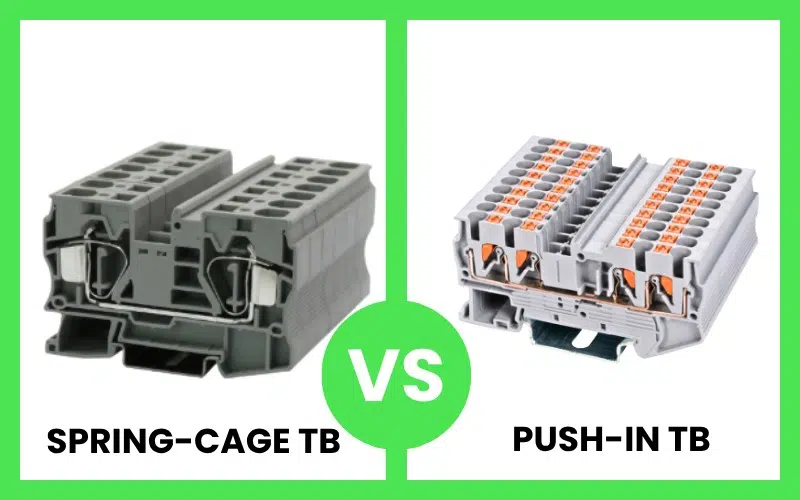
Operation Method
Push-in connectors secure conductors simply by inserting the wire into the terminal, eliminating the need for tools. Spring-cage connectors require pressing down a lever or using a push button to engage the internal spring mechanism.
- Push-in: Direct insertion, tool-free; ideal for high-volume assembly lines.
- Spring-Cage: Requires lever/push mechanism; slightly more steps but ensures consistent clamping.
Tip: In a control panel assembly, push-in terminals reduced wiring time by 50% compared to spring-cage mechanisms.
Suitable Wire Types
Push-in connectors are optimized for rigid (solid) wires and ferruled conductors. Spring-cage connectors accommodate both rigid and flexible multi-stranded wires, including wires without ferrules.
- Push-in: Best for solid wires 0.5–2.5 mm²; less suitable for soft stranded wires without ferrules.
- Spring-Cage: Flexible to both rigid and stranded conductors; supports multi-stranded wires up to 4 mm².
In industrial automation, spring-cage connectors are preferred for vibration-prone machinery using flexible stranded wires.
Installation Speed
Push-in connectors typically allow faster installation due to their direct insertion design. Spring-cage connectors require an additional step to engage the spring mechanism.
- Push-in: Up to 50% faster than screw or spring-cage terminals in repetitive wiring tasks.
- Spring-Cage: Slightly slower but ensures consistent clamping pressure.
Tip: A European panel manufacturer reported that push-in reduced total wiring time from 4 hours to 2 hours for a 100-circuit panel.
Reliability
Push-in connectors provide secure connections if wire ends are properly prepared. Spring-cage connectors offer superior vibration resistance and maintain stable contact under fluctuating mechanical or thermal conditions.
- Push-in: Reliable for low-vibration environments; loose or poorly stripped wires can cause faults.
- Spring-Cage: High reliability in industrial and transport applications; tested to maintain connection under 1 g vibration for 10,000 cycles.
Case: In railway signaling panels, spring-cage terminals showed zero loose-wire failures over 3 years.

Understanding the key features and trade-offs of push-in vs spring cage connector ensures you select the best solution for your wiring needs, balancing efficiency, reliability, and maintenance.
Maintenance
Push-in connectors may require periodic inspection if wires are frequently changed or if poorly stripped wires are used. Spring-cage connectors need minimal maintenance due to the constant pressure of the spring.
- Push-in: Quick rework possible, but occasional checking recommended.
- Spring-Cage: Virtually maintenance-free; no retightening needed.
Tip: In wind turbine control cabinets, spring-cage connectors reduced annual maintenance hours by 30%.
Part 4 Push-in vs Spring-Cage Connector: How to Choose for your project needs?
Choosing the right connector is crucial for reliable wiring and efficient installation. This guide compares push-in vs spring cage connector across several key factors to help engineers and system designers make informed decisions.
| Factor | Push-in Terminal Block | Spring-Cage Terminal Block | Notes / Cases |
| Wire Type | Best for rigid (solid) wires, ferruled conductors | Supports rigid and flexible multi-stranded wires, with or without ferrules | Used in building automation panels with mixed wire types, spring-cage preferred for flexible wires |
| Installation Efficiency | Fast, tool-free wiring; ideal for high-volume assembly | Slightly slower; requires engaging spring mechanism | In a smart home lighting panel, push-in terminals reduced wiring time by nearly 40% |
| Operating Environment | Works well in low-vibration, stable environments | Vibration-resistant, reliable under mechanical or thermal stress | Spring-cage terminals used in industrial conveyor control systems withstand daily vibrations and temperature swings |
| Maintenance Frequency | Easy rework possible; periodic checks recommended | Low-maintenance; no retightening required | In solar inverter cabinets, spring-cage terminals minimize inspection frequency, saving maintenance hours |
By understanding the differences between them, you can select the most suitable terminal block for your project. Push-in terminals excel in high-volume, fast-assembly scenarios, while spring-cage terminals provide durable, vibration-resistant connections for demanding applications.
FAQ
A1: A spring wire connector uses spring pressure to secure wires quickly and reliably without tools, improving installation efficiency.
A2: Spring terminals maintain consistent pressure and prevent slipping, unlike screw terminals which can fail if screws are over- or under-tightened.
A3: Push-in terminals save up to 50% installation time and reduce downtime when replacing devices.
A4: In industrial use, push-in connectors in high-pressure applications should be replaced every 12–18 months.
A5: AOSI offers high-quality push-in and spring-cage connectors with reliable solutions and support tailored to your wiring needs.
Conclusion
The comparison of push-in vs spring cage connector highlights key differences in several features. Push-in terminals enable fast and tool-free wiring for solid or ferruled wires, while spring-cage terminals provide vibration-resistant and reliable connections for rigid and flexible multi-stranded conductors.
These technologies are not mutually exclusive and suit different applications. Choosing the right connector enhances efficiency and reliability. Contact us for professional guidance, and custom options to select the ideal connector for your project.

